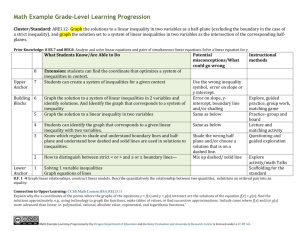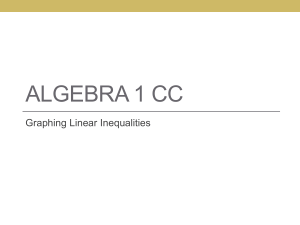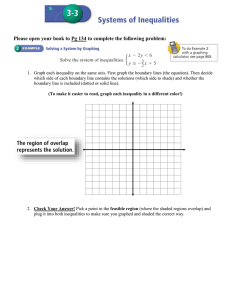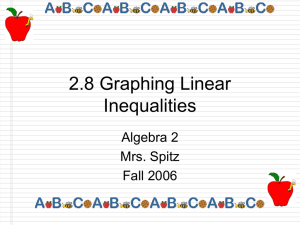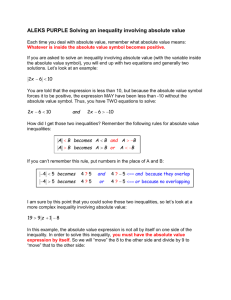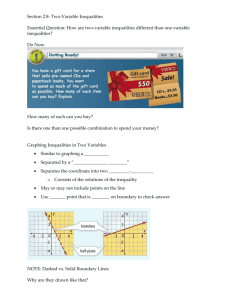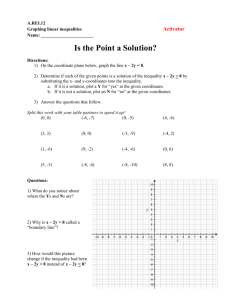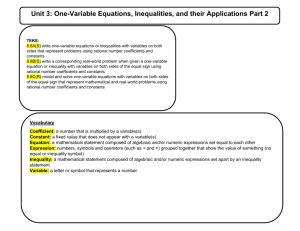Math Notes Unit 4:
advertisement
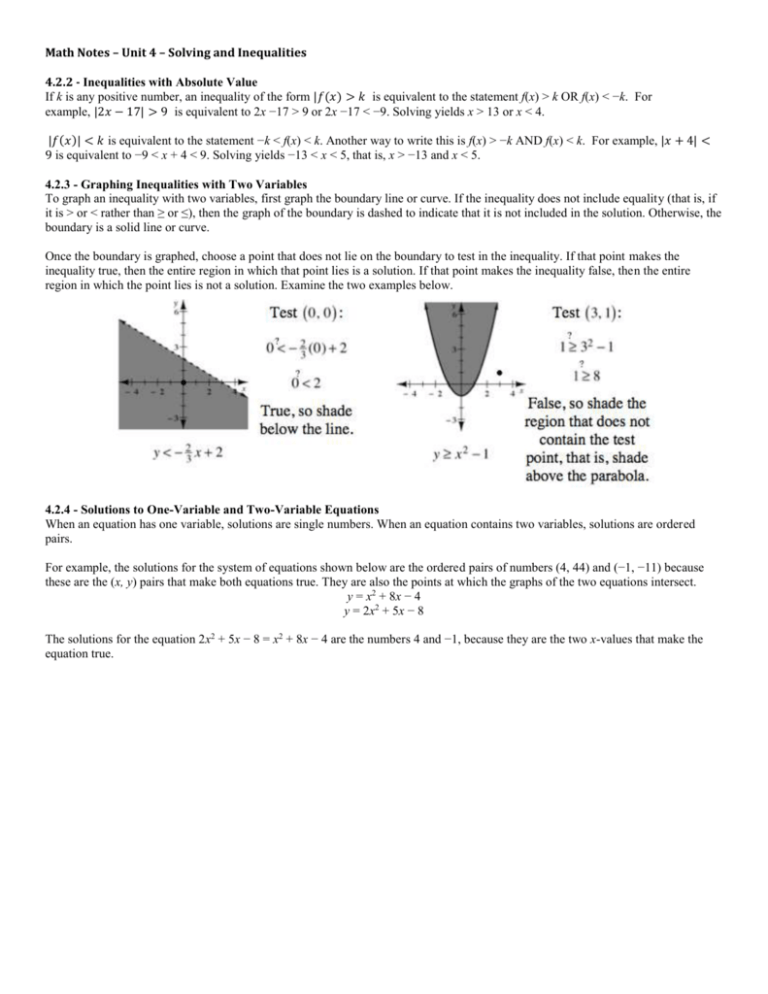
Math Notes – Unit 4 – Solving and Inequalities 4.2.2 - Inequalities with Absolute Value If k is any positive number, an inequality of the form |𝑓(𝑥) > 𝑘 is equivalent to the statement f(x) > k OR f(x) < −k. For example, |2𝑥 − 17| > 9 is equivalent to 2x −17 > 9 or 2x −17 < −9. Solving yields x > 13 or x < 4. |𝑓(𝑥)| < 𝑘 is equivalent to the statement −k < f(x) < k. Another way to write this is f(x) > −k AND f(x) < k. For example, |𝑥 + 4| < 9 is equivalent to −9 < x + 4 < 9. Solving yields −13 < x < 5, that is, x > −13 and x < 5. 4.2.3 - Graphing Inequalities with Two Variables To graph an inequality with two variables, first graph the boundary line or curve. If the inequality does not include equality (that is, if it is > or < rather than ≥ or ≤), then the graph of the boundary is dashed to indicate that it is not included in the solution. Otherwise, the boundary is a solid line or curve. Once the boundary is graphed, choose a point that does not lie on the boundary to test in the inequality. If that point makes the inequality true, then the entire region in which that point lies is a solution. If that point makes the inequality false, then the entire region in which the point lies is not a solution. Examine the two examples below. 4.2.4 - Solutions to One-Variable and Two-Variable Equations When an equation has one variable, solutions are single numbers. When an equation contains two variables, solutions are ordered pairs. For example, the solutions for the system of equations shown below are the ordered pairs of numbers (4, 44) and (−1, −11) because these are the (x, y) pairs that make both equations true. They are also the points at which the graphs of the two equations intersect. y = x2 + 8x − 4 y = 2x2 + 5x − 8 The solutions for the equation 2x2 + 5x − 8 = x2 + 8x − 4 are the numbers 4 and −1, because they are the two x-values that make the equation true.
